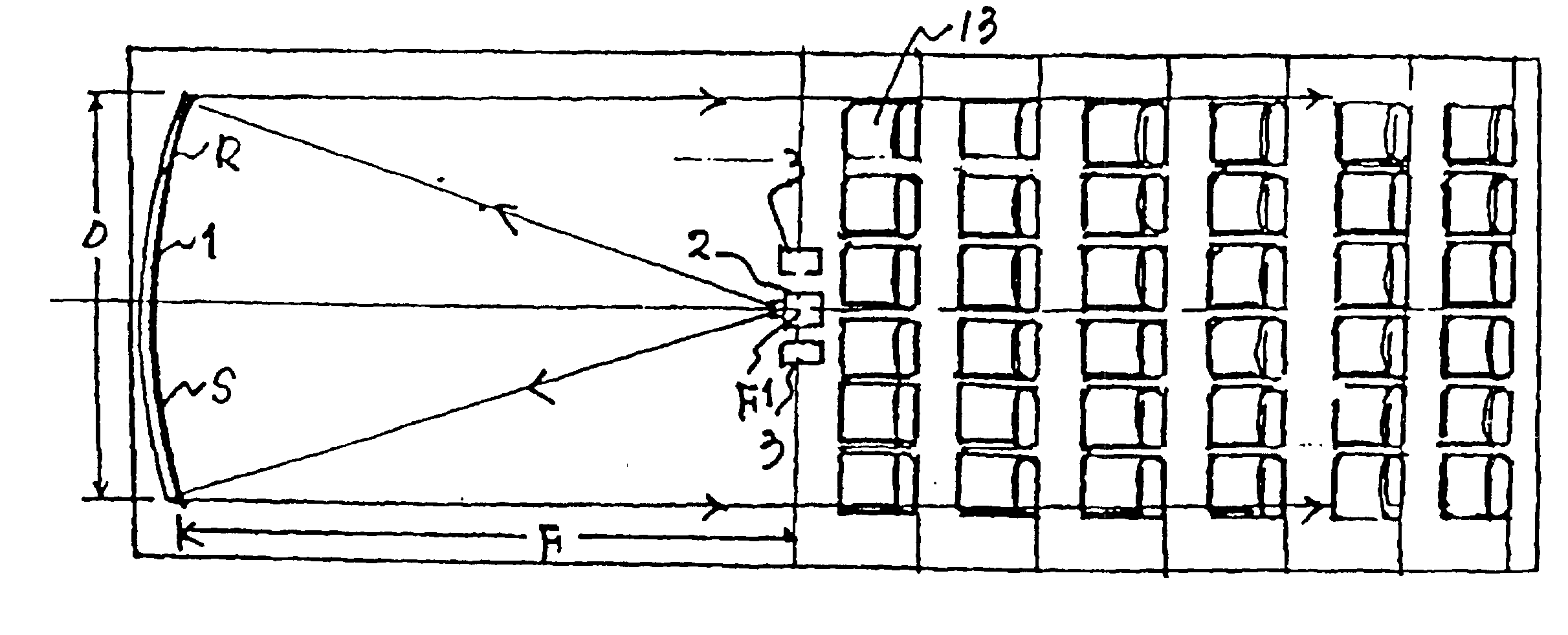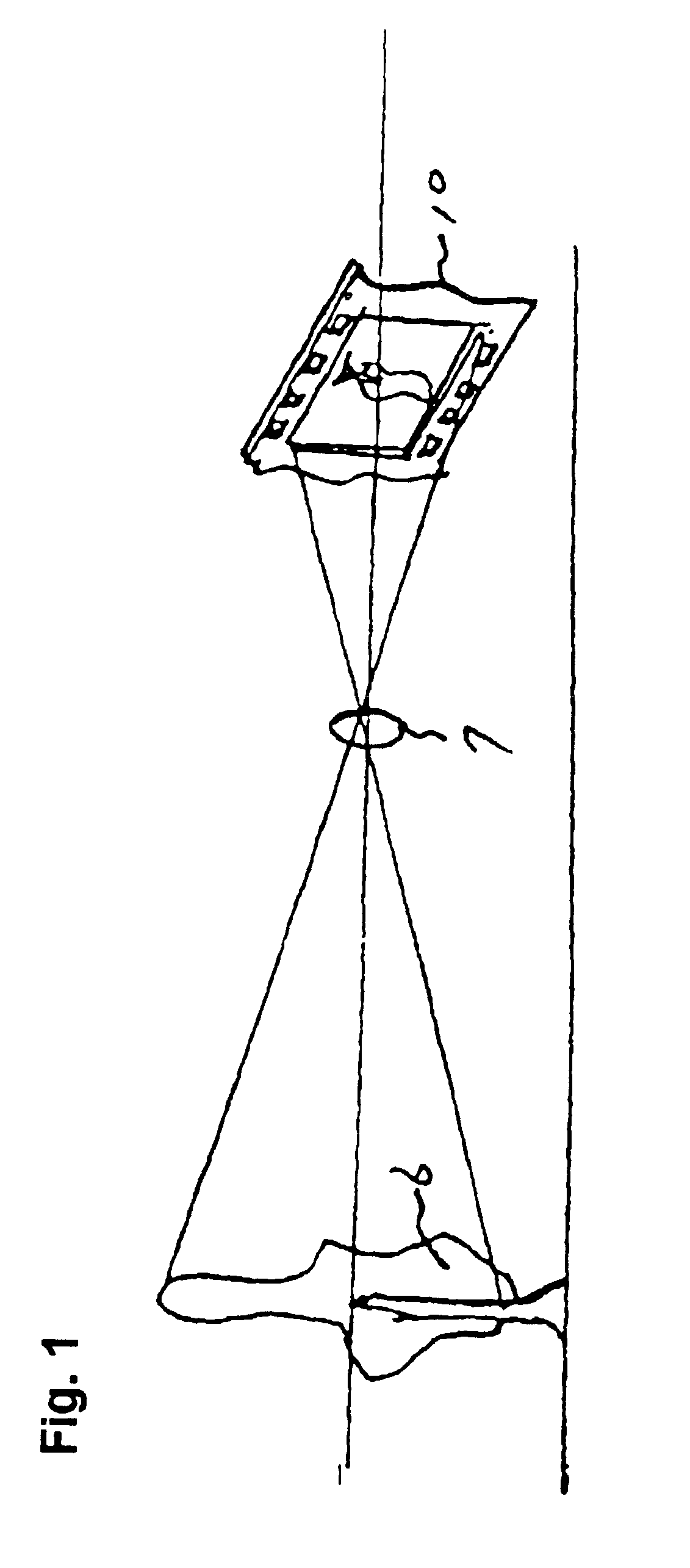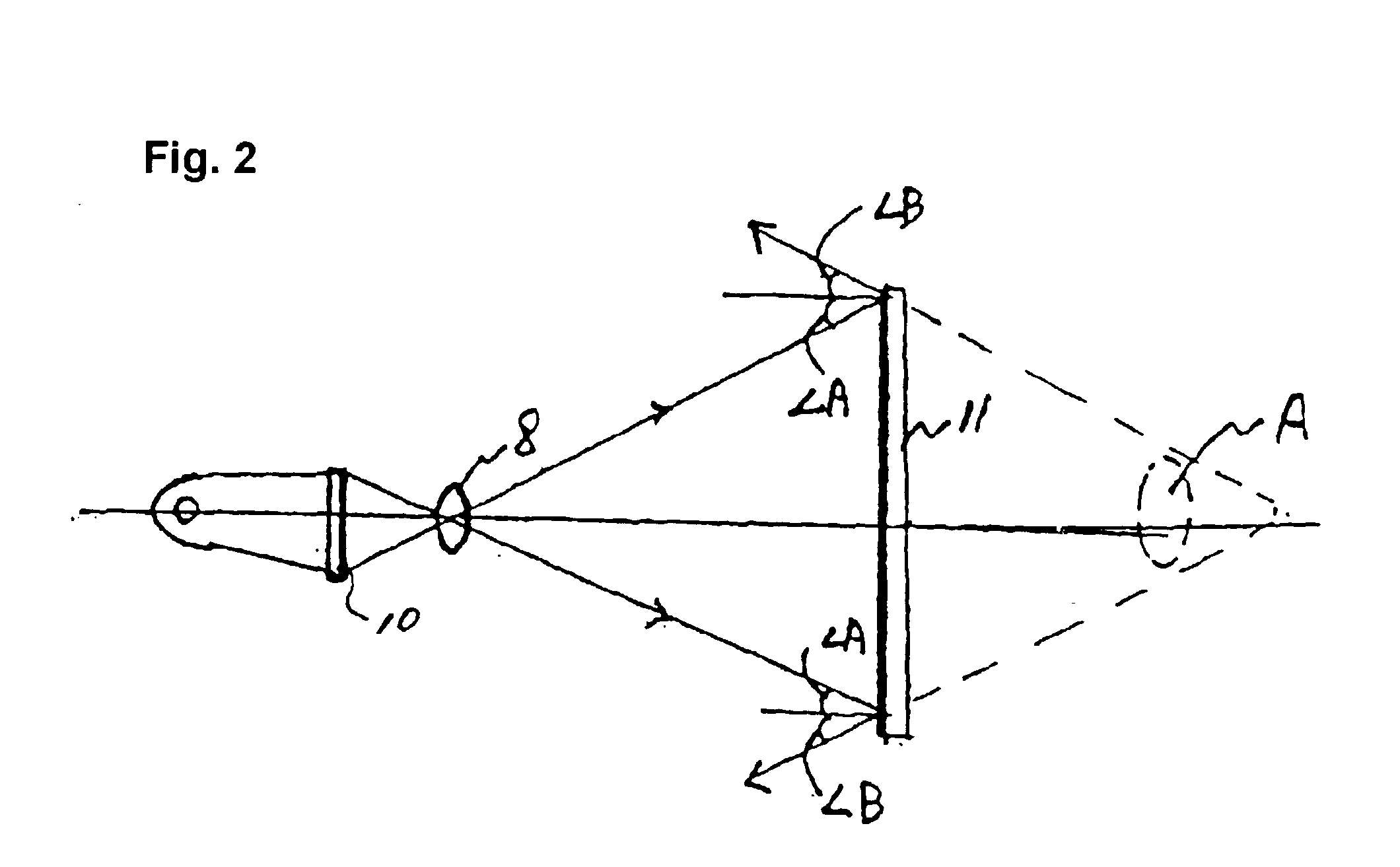Visual and audio system for theaters
- Summary
- Abstract
- Description
- Claims
- Application Information
AI Technical Summary
Problems solved by technology
Method used
Image
Examples
Embodiment Construction
[0073] 1) Size of the spherical screen 1: 12.4 ft (376 cm) (horizontal).times.5.29 ft (160 cm)(vertical) (2.35:1), the screen size: diagonal.apprxeq.185"
[0074] 2) Surface reflectivity S of the spherical screen 1: 20% (20 Gains)
[0075] 3) Projection distance F when an image from the projector 2 is projected onto the spherical screen 1 having a diagonal size of 185": 19.8 ft (6 m)
[0076] 4) Curvature Radius R of the spherical screen 1: 39.6 ft (12 m)(1,2000R)
[0077] 5) Distance F1 between the spherical screen 1 and the projector 2: 19.8 ft (6 m)
[0078] 6) Distance between the spherical screen 1 and each central speaker 3: 19.8 ft (6 m)
[0079] 7) Horizontal length D along which the seats 13 are horizontally arranged: 12.4 ft (376 cm)
[0080] 8) Vertical length D1 along which the seats 13 are vertically arranged: 5.29 ft (160 cm)
[0081] The screen ratio typically adopted in a general theater is 2.35:1. Therefore, the spherical screen 1 is a large-size screen having a diagonal length as long as ...
PUM
 Login to View More
Login to View More Abstract
Description
Claims
Application Information
 Login to View More
Login to View More - R&D
- Intellectual Property
- Life Sciences
- Materials
- Tech Scout
- Unparalleled Data Quality
- Higher Quality Content
- 60% Fewer Hallucinations
Browse by: Latest US Patents, China's latest patents, Technical Efficacy Thesaurus, Application Domain, Technology Topic, Popular Technical Reports.
© 2025 PatSnap. All rights reserved.Legal|Privacy policy|Modern Slavery Act Transparency Statement|Sitemap|About US| Contact US: help@patsnap.com



